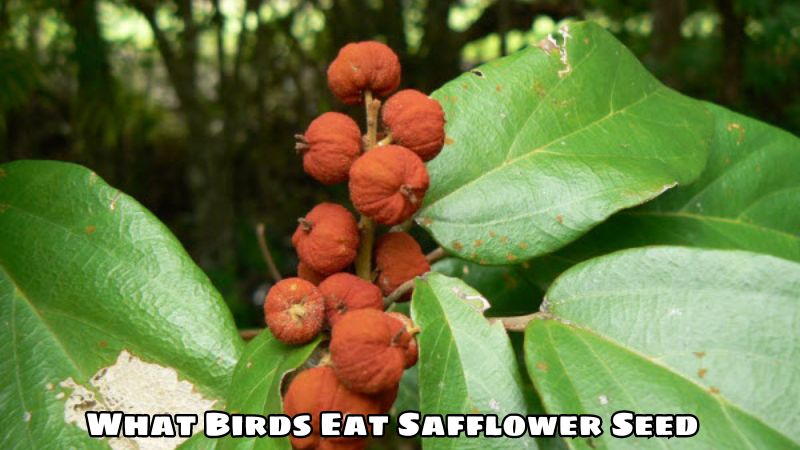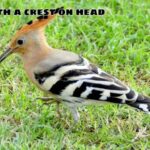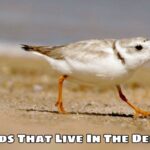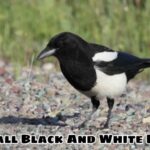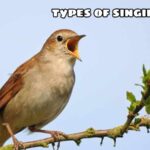When talking about “crazy fans” of nature, it is impossible not to mention the small, lively birds with a strong passion for safflower seeds. This bird, with its brilliant plumage and chirping sound, not only decorates the natural picture more vividly but also plays an important role in maintaining the ecosystem.
This article will take you to explore the world of safflower seeds, from their characteristics, role in the ecosystem to the risks they are facing. Join Exoticbirdscorne on this exciting journey to better understand what birds eat safflower seed!
Introducing safflower
The safflower plant, also known as the kham plant, originates from the Middle East and is commonly grown in Vietnam. This plant is famous for its bright yellow flower clusters, but few people know that its seeds are also a favorite food of many birds.
Safflower seeds are small in size, oval in shape, with a characteristic dark brown color. Although small, safflower seeds contain abundant nutrients, including protein, fat and essential vitamins. Thanks to that, this is a valuable food source for birds, helping to provide energy and necessary nutrients for the body.
So, which birds are “crazy fans” of safflower seeds? This mysterious bird will be revealed in the next part, promising to bring you interesting discoveries about the surprising natural world! Let’s read together to decode this mystery!
What birds eat safflower seed
As revealed in the previous section, the “crazy fans” of safflower seeds are birds! However, not all birds are passionate about this type of seed. Below is a list of some birds that regularly enjoy this “delicious dish”:
- Pigeon: This familiar bird is the number one “crazy fan” of safflower seeds. With a strong beak, pigeons easily peel the shell and enjoy the delicious filling inside.
- Sparrow: This small, lively bird also loves safflower seeds. They often gather in large flocks and “party” together with this dish.
- Magpies: Famous for their chirping sounds, magpies also cannot resist the lure of safflower seeds. These birds love to eat small seeds, and safflower seeds are one of their favorite choices.
- Bulbuls: Although they can eat safflower seeds, this is not the main food of crested buntings. They often eat fruits, insects and other seeds.
In addition, there are a number of other birds such as starlings, cuckoos, ringed birds, etc. that can also eat safflower seeds.
It can be said that safflower seeds are a favorite food source for many birds, providing them with abundant nutrients to maintain health and activity. Observing birds passionately enjoying safflower seeds will bring us moments of relaxation and small joys in life.
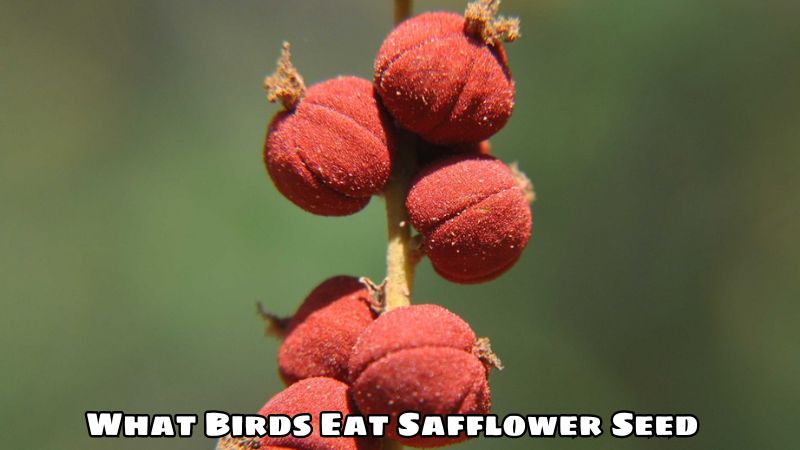
Adaptive characteristics of birds eating safflower seeds
To be able to fully enjoy their favorite food – safflower seeds – these seed-eating birds have evolved unique adaptations:
- Strong beak: This is the most important “tool” that helps birds separate hard seed shells. Their beaks are often hard, sharp and have a strong bite, making it easy to peel off the seed shell to get the kernel inside.
- Thick stomach: Safflower seeds contain a lot of fiber, so seed-eating birds need a thick stomach to digest food effectively. Their stomachs often have a thick layer of muscle and are able to secrete enzymes to help break down food particles.
- Long intestine: Because grain foods are more difficult to digest than soft foods, seed-eating birds need long intestines to optimize nutrient absorption. The long intestine helps increase the contact surface area of food with digestive enzymes, thereby helping the body absorb maximum nutrients from the grain.
- Good eyesight: Safflower seeds often grow on trees or scattered on the ground, so seed-eating birds need good eyesight to find food in the natural environment. Their sharp eyesight helps them easily spot tiny safflower seeds, even in low light conditions.
Thanks to these wonderful adaptive characteristics, seed-eating birds are able to take full advantage of the abundant food source from safflower, ensuring themselves a source of nutrients necessary for life.
Role of birds eating safflower seeds
The presence of “crazy fans” of safflower seeds – birds that eat these seeds – not only makes the natural picture more vivid but also plays an important role in maintaining ecological balance.
Controlling bird populations
By eating safflower seeds, these birds contribute to controlling the number of seed-eating birds, avoiding population explosion that leads to negative impacts on the ecosystem. This control helps ensure biodiversity and the sustainable development of other species in the ecosystem.
Seed dispersal
When moving and foraging, these birds accidentally carry safflower seeds and scatter them in different areas. Thanks to this, safflower seeds have the opportunity to germinate and grow into new plants, contributing to the propagation of safflower and expanding the distribution area of this plant.
It can be said that birds that eat safflower seeds play an important role in maintaining the balance and stability of the ecosystem. Protecting and creating a safe living environment for these “crazy fans” of safflower seeds will contribute to protecting the ecosystem and biodiversity on Earth.
Human impact on safflower seed-eating birds
Despite playing an important role in the ecosystem, safflower seed “crazy fans” – these seed-eating birds – are facing many threats from human activities:
- Forest exploitation: Indiscriminate exploitation of forests destroys the natural habitat of birds, leaving them without a place to shelter and feed. Loss of habitat leads to a decrease in bird numbers, affecting the ecological balance.
- Pesticide use: Excessive use of pesticides in agriculture not only harms crops but also negatively affects birds and their food sources. Pesticides can leach into safflower seeds, be toxic to birds when eaten, or affect their ability to reproduce.
- Climate change: Climate change leads to changes in bird habitats, food sources and breeding grounds. Rising temperatures, droughts and floods make it difficult for birds to find food and build nests, affecting their survival and development.
The negative impact of humans on safflower seed-eating birds is an issue that needs to be addressed and addressed. Protecting forests, limiting the use of pesticides and responding to climate change are essential measures to protect these “crazy fans” of safflower seeds, contributing to maintaining ecological balance and protecting the environment. living environment for humans.
However, due to negative impacts from human activities, these birds are facing many risks. Their habitat is shrinking, food sources are affected, and climate change also threatens their survival.
Therefore, protecting safflower seeds is the shared responsibility of each individual and community. We need to join hands to protect bird habitat, limit indiscriminate exploitation of forests, use pesticides appropriately and effectively respond to climate change. Besides, planting more trees and providing food and water sources for birds also makes an important contribution to protecting and developing bird populations.
Epilogue
Thus, through this article, we have discovered interesting things about safflower seed-eating birds, from their characteristics, roles in the ecosystem to the risks they are facing.
It can be affirmed that safflower seeds play an extremely important role in maintaining the balance and stability of the ecosystem. The protection and sustainable development of these bird species is the shared responsibility of each individual and community.
Let’s join hands to protect the living environment, food sources and build a bright future for these “crazy fans” of safflower seeds, contributing to ecological balance and protecting our own lives. .

